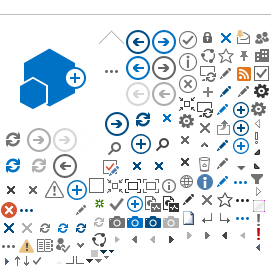Page Content
Raymond Gariépy
Integrating students with special needs into the regular classroom can be a daunting challenge for a teacher.
Aside from regular classroom duties, fulfilling requirements of the curriculum and working closely with students, teachers are routinely expected to complete Individualized Program Plans (IPPs) for students who have mild, moderate or severe special needs or who are gifted.
“IPP development and implementation adversely affects a teacher’s workload,” says Pat Dalton, ATA coordinator of operations. Dalton should know. For 18 years she taught students with special needs and, more recently, conducted a series of special education focus group sessions with teachers across Alberta.
The focus groups grew from a resolution passed at last year’s Annual Representative Assembly (ARA), Dalton says. Delegates to ARA directed the ATA to “review the impact of Individual Program Plans/Individual Education Plans on teacher workload.” The first part of the review included surveying delegates attending the ATA’s Special Education Council and Gifted and Talented Education Council conferences. The second part of the review involved meeting teachers face to face in focus groups.
“The goals of the focus groups were to first identify what helps or hinders the development and implementation of IPPs,” explains Dalton. Participants were then asked to identify what schools, jurisdictions, Alberta Education, universities and the ATA can do to assist with IPP development and implementation. “Last, participants brainstormed recommendations on improving the IPP process,” she says.
“The feedback from participants was powerful. The underlying theme of most responses was that teachers are professionals and they want to make the decisions related to developing and implementing programs for students with special needs. Teachers want a place at the table with government to discuss what is good policy and practice. This includes accountability, which currently is perceived as adversely affecting teachers’ ability to manage the workload related to IPPs. IPPs have become a ‘legal’ document versus a comprehensive working program plan,” Dalton says.
The majority of participants attending the 10 focus group sessions were elementary classroom teachers. Each session averaged between 20 and 30 teachers, she says.
The Association’s focus groups coincided with the government’s review of special education funding, the timing of which could not have been more favourable, says Dalton. The information gleaned from these focus groups will help inform the new funding, policy and accountability framework currently being developed by Alberta Education.
Dalton is upbeat about the focus group process: “I believe this is a format that the Association should adopt. It’s important to hear directly from our members.”
Dalton says that teachers participating in the focus groups were passionate, wholly dedicated to teaching children with special needs and open about their experiences. “Especially moving were the stories shared by teachers. The feedback from young teachers was particularly revealing. Young teachers really struggle with students with special needs because the level of intervention and assistance is inadequate. Developing IPPs requires time and expertise, something that teachers new to the profession simply don’t have. Consequently, they feel overwhelmed,” Dalton says.
Dalton is optimistic that the survey findings will lead to improvements in the area of special education. A final publication on the research initiative will be made available to schools and on the ATA website.
Drawing on the experience gained in the IPP consultation process, the ATA is hosting a series of focus group sessions for outreach school teachers. For details, visit the Features page of the ATA’s website (www.teachers.ab.ca).
What are IPPs?
The following is from Alberta Education’s Key Components of Programming for Students with Learning Disabilities.
Individualized program plans (IPPs) are written commitments of intent by education teams to ensure appropriate planning for exceptional students. They are working documents and records of student progress.
IPPs are
–collaborative team efforts involving students, parents, regular education teachers and resource personnel
–based on a belief in individualized programming and developed to address the specific needs of individual learners
–instructional guides for teachers
–administrative documents which help monitor and evaluate students’ educational progress and programs
–guides for transition planning.
Individualizing IPPs
• Focus on the individual needs of students, not on the categorical label. Avoid a generic list of accommodations because individuals with learning disabilities vary widely in their strengths and needs.
• Consider students’ academic, cognitive and processing strengths. How can instruction build on strengths?
• Consider the appropriate balance for individual students. Each student should participate in the regular curriculum as much as possible with accommodations to support success. Students may also need additional instruction to develop skills and strategies.
• Use multiple sources of assessment data to determine strengths and needs.
• Consider students’ needs beyond academics, such as social and behaviour needs.
• Focus on key goals for the individual student.
• Make collaborative, comprehensive transition plans well in advance of anticipated transitions.
Also In the News
